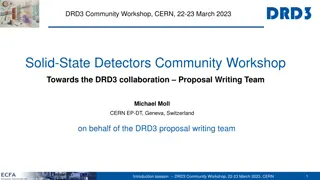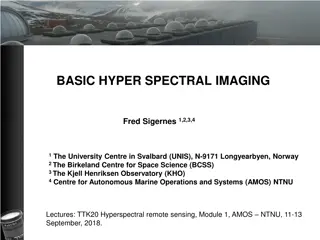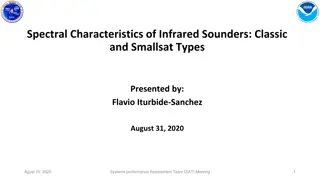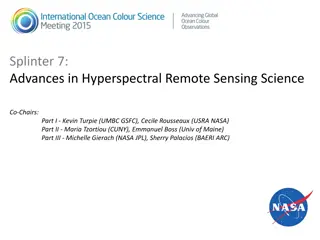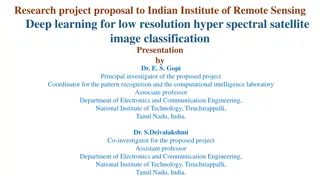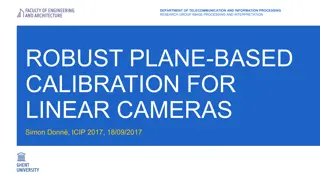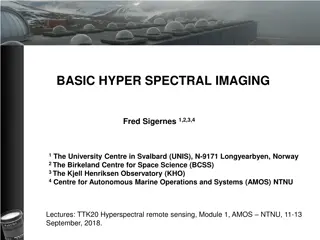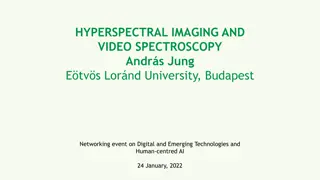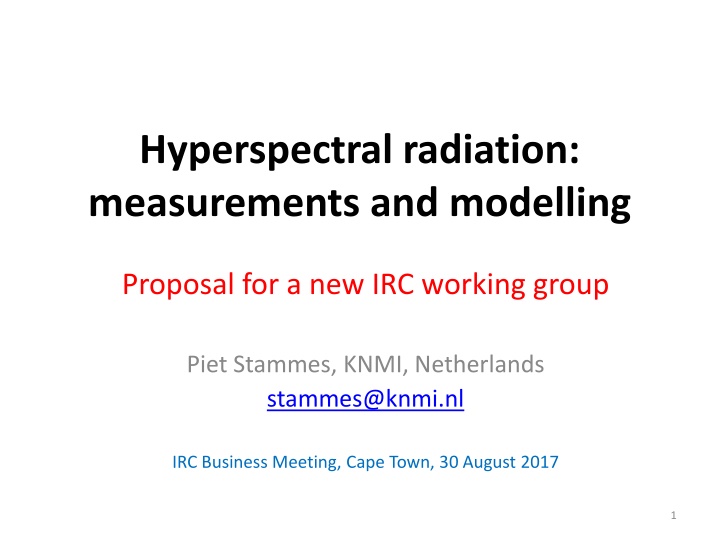
Advancements in Hyperspectral Radiation Measurements and Modeling
Explore the latest trends in satellite and ground-based measurements of high-spectral resolution radiation for atmospheric composition retrieval. Learn about the challenges and advantages of interpreting hyperspectral spectra, and discover proposed topics for a new working group focusing on hyperspectral radiation research.
Download Presentation

Please find below an Image/Link to download the presentation.
The content on the website is provided AS IS for your information and personal use only. It may not be sold, licensed, or shared on other websites without obtaining consent from the author. If you encounter any issues during the download, it is possible that the publisher has removed the file from their server.
You are allowed to download the files provided on this website for personal or commercial use, subject to the condition that they are used lawfully. All files are the property of their respective owners.
The content on the website is provided AS IS for your information and personal use only. It may not be sold, licensed, or shared on other websites without obtaining consent from the author.
E N D
Presentation Transcript
Hyperspectral radiation: measurements and modelling Proposal for a new IRC working group Piet Stammes, KNMI, Netherlands stammes@knmi.nl IRC Business Meeting, Cape Town, 30 August 2017 1
Trend in satellite and ground-based measurements: High-spectral resolution radiation measurements in contiguous spectral ranges for retrieval of atmospheric composition Satellites - Solar range: Contiguous: GOME, SCIAMACHY, OMI, GOME-2, Future: TROPOMI, GEMS, TEMPO, Sentinel-4, EMI, Sentinel-5, CLARREO, Specific bands: GOSAT, OCO-2, TanSat, Satellites - Thermal range: Contiguous: AIRS, IASI, CrIS, Future: IRS, IASI-NG, 2
GOME & GOME-2, 1995 - current 4000 spectral points Resolution: 0.2 0.5 nm SCIAMACHY, 2002-2012 8000 spectral points Tilstra et al., JGR, 2017) 3
IASI Spectral range: 650 2760 cm-1 Spectral resolution: 0.35 0.50 cm-1 8400 spectral points From: CNES4
Challenge and advantage To interpret the spectra, we need to accurately and efficiently model the observed spectra. Hyperspectral resolution spectra are the combination of all scattering, absorption and emission processes by atmosphere and surface: Trace gases Clouds Aerosols Surfaces These components and their changes are all visible from the same spectrum! 5
Topics for new working group on hyperspectral radiation Measurements from satellite, ground, and aircraft Design Calibration Validation Modelling of the observations Importance of slit-function Inclusion of solar Fraunhofer lines Inclusion of Raman scattering Collision-induced absorption, line-mixing Differential retrieval methods (like DOAS method) Fast modelling of trace gas absorption bands (like O2 A-band) Coupling of scattering and absorption . 6
Suggestions are welcome! Members are invited! stammes@knmi.nl 7




